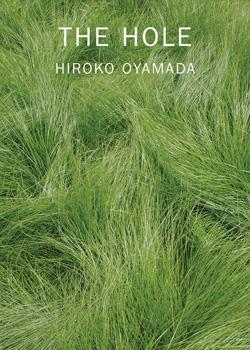The Hole

By Oyamada Hiroko
Translated by David Boyd
New Directions (2020)
ISBN-13: 978-0811228879
Review by Alex Russell
When discussing the work of Oyamada Hiroko, it is difficult to escape the adjective “Kafkaesque”, a word too often thrown about without much consideration to describe anything verging on the absurd. Reviews of Oyamada’s 2013 debut work The Factory are replete with the term, its bureaucratic setting and unorthodox structure undeniably reminiscent of the works of Franz Kafka and his literary originalities. The Hole, Oyamada’s next novella published the following year, and published in a translation by David Boyd in 2020, further develops this trademark bizarreness, combining the precision and mundanity of daily life with the fantastical and incomprehensible to a suitably confusing effect.
The Hole focuses on Asahi, or Asa, a young woman who has agreed to a move to her husband’s hometown after he has been transferred to a local branch of his company. Not only is it her husband’s hometown, but they move into a house owned by his parents, who also happen to live in the house next door. Asa gives up her temporary job to make the move, given the lack of job opportunities in the new rural location, to the chagrin of her colleague who is envious of her ability to stop working and become a housewife. Her move to the country is vividly brought to life by Oyamada, whose descriptions of the new setting root it firmly in the physical world; the pouring rain on the day they move in, which gives way to the sound of cicadas so prevalent in Japanese literature and so symbolic of summer, the oppressive heat which further intensifies Asa’s lethargy and boredom. In contrast to the fantastical and confusing narrative, Oyamada’s descriptive style is natural and experiential, taking the reader along on Asa’s move.
Settling into her boredom as a housewife, Asa is one day tasked with depositing a large sum of money in the local convenience store by her mother-in-law, Tomiko. Setting out on this errand, she is distracted by an unidentifiable, large black animal, taking a detour down via the river where she accidentally falls into a hole that she realises is almost perfectly her size. When she eventually escapes, it is with the help of a neighbour, who identifies her as “the bride”. This is perhaps the most straightforward example of the clear definitions of individuals in the world Oyamada creates, with each person existing in a clearly distinguished niche. Asa, having forfeited any self-identification through her move to her husband’s hometown is defined to others by her marital status, labelled merely as an extension of her husband. Asa’s husband and father-in-law are barely present, defined by their work and role as breadwinners, even if they are almost entirely absent from the households they supposedly support. Tomiko, even though she is employed, maintains the stereotypical divisions of gender through her assumption of the household responsibilities in addition to her work.
A later encounter with this animal leads only to more questions, as she meets a man making the startling claim to be her brother-in-law, self-admittedly concealed by his family for his refusal to conform with societal expectations and engage with the outside world in the expected ways. Upon hearing about Asa’s fall into the hole he mockingly asks if she thought she was Alice in Wonderland, looking for some adventure to whisk her away from her humdrum life. He assures her that she is no Alice, and she is not on any adventure, but the bizarre and surreal sudden turn of events since encountering the mystery creature raises questions over what is real and what is imagined.
Despite his challenging temperament and undeniably strange behaviour, Asa’s experience of her new life has clear parallels with that of this newfound relative’s. Asa is isolated, almost imprisoned by her life as a country housewife, living on the periphery of a clearly introspective rural community with few opportunities to socialise. Her brother-in-law by contrast willingly retreated from the community into isolation, admitting almost with glee his retreat from society 20 years prior. His isolation conveniently adds to his mystique, as Asa is unable to verify his existence with others, having been warned not to tell her husband or her mother-in-law about their meeting.
Asa’s supposed brother-in-law’s interest in the animal is in direct contrast to hers; while she followed it in hope of finding answers as to what it was, tried to discuss it with her husband, and even searching in vain on the internet for any further information that could identify it, he simply accepts that it exists, understands what it is through his encounters with it, and accepts that it does not need any further formal definition or identification.
When confronted by a work such as The Hole, which simply ends more than it concludes, leaving many of the reader’s questions entirely unanswered, we are naturally inclined to respond like Asa, seeking definitive answers as to what it all means. Frustrating though it may be, we are left with little option but to take the alternative approach and accept The Hole for what it is; a perplexing, challenging story that offers itself up to countless interpretations. However, once we accept this approach, we are free to even take pleasure in the fact that it is not a work to be understood in any definitive sense of the word. When we exempt ourselves from the expectation of answers, we can simply enjoy the detail and vibrancy of the ever-so-real world that Oyamada creates, and allow ourselves to react naturally and without inhibition to the events of the work.

